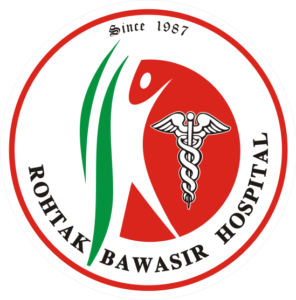How Can I Get Rid of Piles?


Updated on: 4th Jun 2024
Summary
Hemorrhoids, or piles, are enlarged veins in the lower rectum and anus. They can produce discomfort, itching, and bleeding during bowel movements, and they can be very uncomfortable. Millions of individuals worldwide suffer from piles, yet they are frequently treatable with lifestyle modifications, over-the-counter medications, and medical interventions. This thorough tutorial will examine efficient methods for eliminating piles and relieving associated symptoms.
Hemorrhoids, or piles, are enlarged veins in the lower rectum and anus. They can produce discomfort, itching, and bleeding during bowel movements, and they can be very uncomfortable. Millions of individuals worldwide suffer from piles, yet they are frequently treatable with lifestyle modifications, over-the-counter medications, and medical interventions. This thorough tutorial will examine efficient methods for eliminating piles and relieving associated symptoms.
Understanding Piles: Causes and Symptoms
It’s important to comprehend the basic symptoms and causes of piles before exploring treatment alternatives. Both internal and exterior piles are possible (within the rectum) (under the skin around the anus).
Causes of Piles:
- Straining During Bowel Movements: Prolonged diarrhea or constipation can cause severe straining, which exerts tension on the rectum and anus veins.
- Prolonged Sitting: Prolonged sitting, particularly while using the restroom, can exacerbate strain on the veins in the lower abdomen.
- Pregnancy: Pregnancy-related increases in pelvic blood vessel pressure might result in piles.
- Obesity: The pelvic veins are further compressed by excess weight.
- Low-Fiber Diet: Straining during bowel motions and firm stools can result from a low-fiber diet.
- Heavy Lifting: Lifting heavy goods on a regular basis might lead to piles and raise abdominal discomfort.
Home Remedies for Piles

1. Dietary Changes
- Increase Fiber Intake: Legumes, whole grains, fruits, and vegetables can soften stools and lessen straining. Try to consume 20–35 grams of fiber per day.
- Stay Hydrated: Constipation can be avoided and soft stools can be maintained by drinking lots of water. Try to drink eight glasses of water a day or more.
2. Warm Sitz Baths
Reducing swelling and pain can be achieved by taking warm baths for ten to fifteen minutes many times a day, particularly after bowel movements. Sitting in warm water while taking a sitz bath can be especially relaxing.
3. Over-the-Counter Treatments
- Topical Creams and Ointments: Witch hazel and hydrocortisone-containing products help lessen irritation and itching.
- Pain Relievers: Acetaminophen and ibuprofen, two over-the-counter pain medications, are effective in reducing pain and suffering.

While lifestyle modifications and home treatments can help manage piles, it’s important to see a doctor if you have any of the following symptoms:
- Severe pain or discomfort.
- Excessive bleeding during bowel movements.
- Symptoms that do not improve with home treatment.
- Piles that protrude and do not return inside after bowel movements.
Lifestyle Changes to Prevent and Manage Piles

Modifications in lifestyle can greatly aid in pile management and prevention. A high-fiber diet that includes lots of fruits, vegetables, and whole grains guarantees smoother stools and lessens the need to strain when going to the bathroom. It also helps to stay hydrated, so aim for at least 8 glasses of water each day. Frequent physical activity, like swimming or walking, eases venous pressure and supports regular bowel function. Don’t sit for extended periods of time, especially when using the restroom, and develop a regular bowel routine without postponing the urge to urinate. Reducing irritation and accelerating healing can be achieved by practicing proper hygiene, cleaning with gentle techniques, and avoiding strong soaps.
Medical Treatments for Piles

Hemorrhoids, or piles, may occasionally need to be treated medically when lifestyle modifications and over-the-counter treatments fail to relieve the symptoms. There are numerous efficient medical therapies available, ranging from surgical operations to less invasive procedures. Here, we go over five typical medical procedures for piles:
1. Rubber Band Ligation
Internal hemorrhoids can be treated with a minimally invasive treatment called rubber band ligation. In order to stop the hemorrhoid’s blood flow, a little rubber band is wrapped around its base during the surgery. Consequently, within a week, the hemorrhoid starts to diminish and eventually falls out. There is no need for anesthesia for this treatment, which is usually carried out in a physician’s office. Although there may be some discomfort and bleeding, most patients recover quickly. For small to medium-sized hemorrhoids, rubber band ligation is an efficient treatment with a little risk of consequences.
2. Sclerotherapy
Using sclerotherapy, the hemorrhoid tissue is injected with a chemical solution, which causes it to contract and eventually dissolve. This method is an alternative to rubber band ligation and is typically used for internal hemorrhoids. Sclerotherapy can be done in an outpatient clinic, is rapid, and causes little pain. The injection solution irritates the hemorrhoid, causing scar tissue to grow that stops the blood supply and shrinks the hemorrhoid. This technique has a good success rate, little adverse effects, and works well for small to medium-sized hemorrhoids.
3. Infrared Coagulation
A non-surgical procedure called Infrared Coagulation (IRC) employs infrared radiation to cause the blood vessels supplying the hemorrhoid to clot. The hemorrhoid tissue shrinks and scars as a result of the infrared light’s heat. Small to medium-sized internal hemorrhoids are usually treated with this technique, which can be done without anesthesia in an outpatient environment. IRC is a short process with little discomfort and little chance of problems. After therapy, patients can typically resume their regular activities quickly.
4. Hemorrhoidectomy
The surgical operation known as a hemorrhoidectomy is used to remove big or severe internal or external hemorrhoids. When all other therapies are ineffective or the hemorrhoids are really large and painful, this operation may be considered. A scalpel, laser, or cautery equipment is used by the surgeon to remove the hemorrhoidal tissue during a hemorrhoidectomy. A few weeks may pass before full recovery from the treatment, which is done under anesthesia. Although this technique has a high success rate and is frequently indicated for severe instances, patients may endure pain and discomfort during the recovery phase. A hemorrhoidectomy lowers the chance of recurrence considerably and offers long-term comfort.
5. Stapled Hemorrhoidopexy
Prolapsed internal hemorrhoids are the main condition treated by stapled hemorrhoidopexy, commonly referred to as stapled hemorrhoidectomy. During this process, the hemorrhoid tissue is repositioned and its blood supply is severed using a circular stapling device. The hemorrhoid shrinks and sticks to the rectal wall as a result. Compared to a conventional hemorrhoidectomy, stapled hemorrhoidopexy is less painful and requires less recovery time. Patients can resume regular activities sooner and typically have less discomfort following surgery. On the other hand, not all kinds of hemorrhoids—especially large external ones—may be suited for this operation.
Meet Our Specialists

Dr. Raj Kumar Garg (B.A.M.S.)
40+ Years of Experience

Dr. Rahul Garg (B.A.M.S.)
15+ Years of Experience

